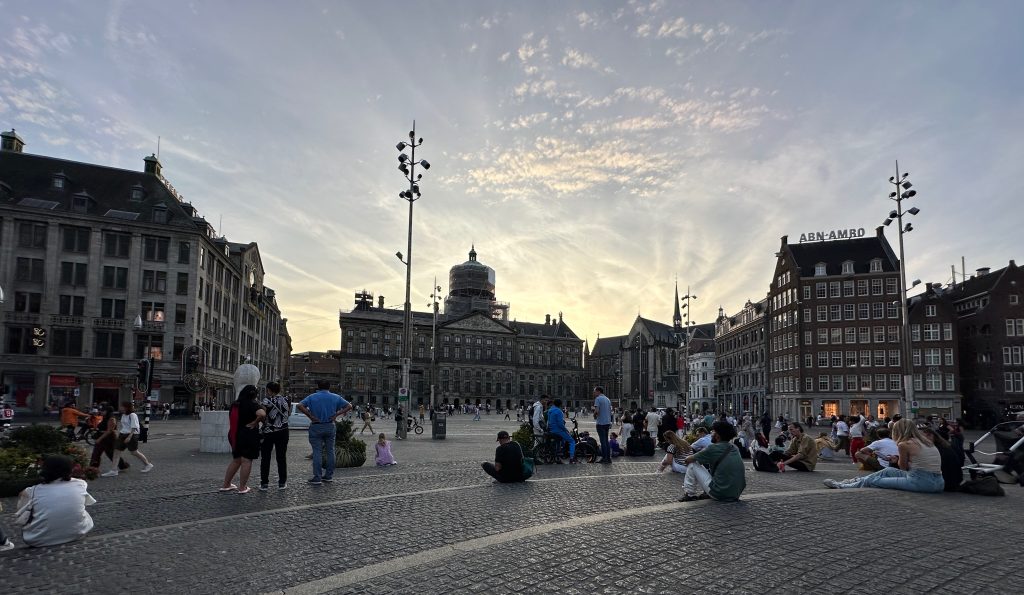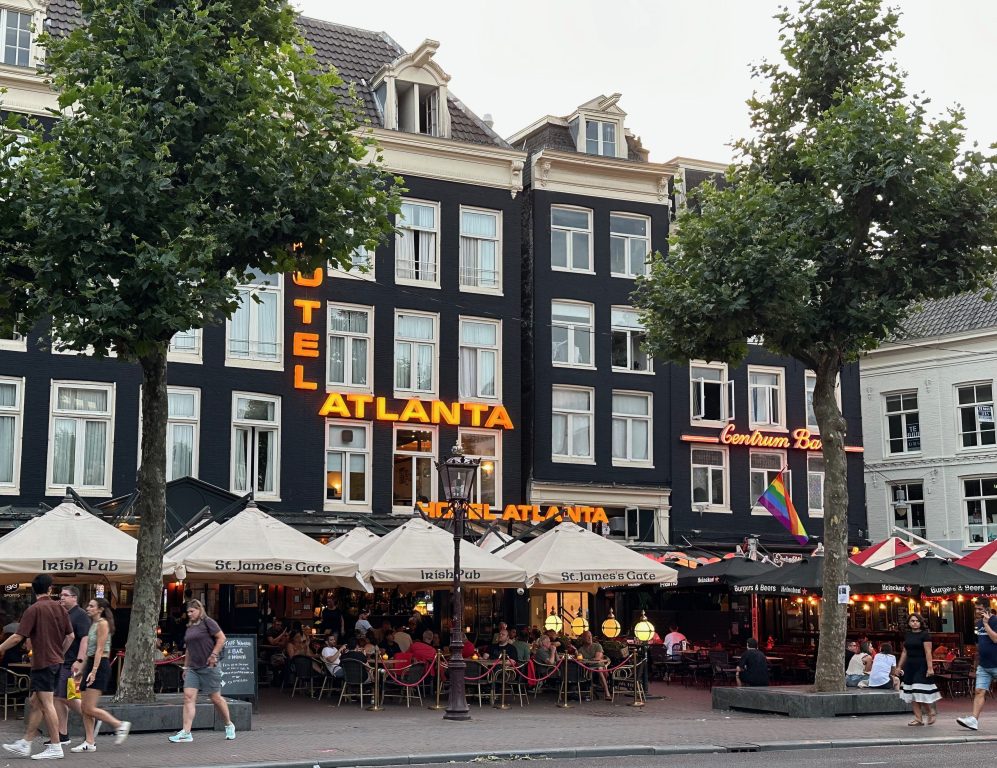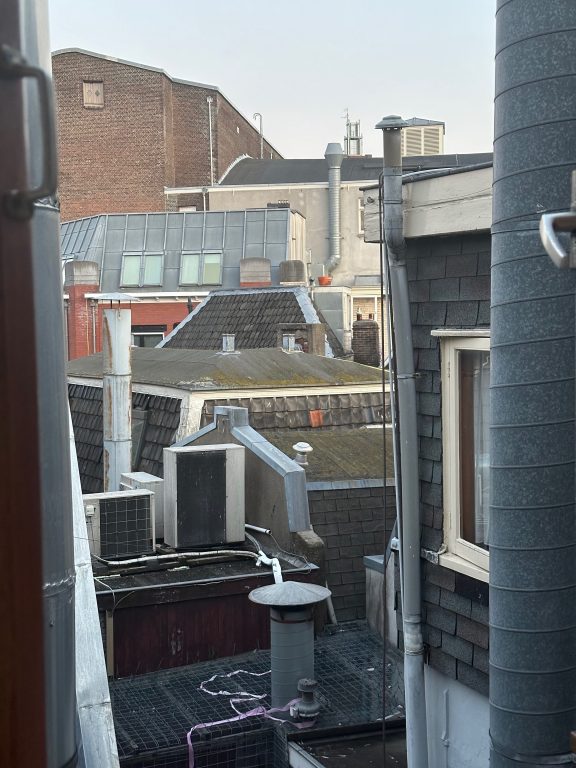I woke up to the cries of urban seagulls through our open windows (just as annoying as the pigeons, but I sure like their calls better, since they make me think of the ocean) early in the morning and looked out of our window at the crazy layers of roofs and chimneys behind our hotel. How anyone does roof repair, chimney repair, or anything else that requires getting into this warren of buildings is beyond us! But it was a nice way to wake up after a good night’s sleep in a quiet room all the same.
We made our way down to the modest buffet breakfast (an extra 10 Euro for each of us, but worth it given the prices for a cup of coffee around here) and sat for a while before embarking on a long day of walking (a total of 14 miles / 23 km or 34,000+ steps, if you prefer that measure). It was an absolutely gorgeous summer day, and warm enough that we consistently chose the shady side of the canal walks whenever we could. We decided early on to just ramble and mix familiar with new places, and although Mark has a GPS record that would show our exact path, it’s probably easier to just say that we zig-zagged the canals and rivers in Amsterdam’s city center with the occasional focus on “let’s get to XXX” but otherwise mostly at random. We were looking more for what goes for “ordinary” in Amsterdam than for special sights, and liked the glimpses of how people who live here make things work in a city that has soooo many visitors. We do love the canals and bridges (surprise! so do the gazillion other tourists that are here) and I especially loved the slightly less central, quieter canal walks, which still have all the old façades with their mix of 17th- through 19th-century styles, even though one always has to keep in mind that behind those, almost all the spaces have been fully renovated and in some cases completely rebuilt. There were plenty of open doorways into homes and offices to see the different styles of remodeling, and it’s very common to still see crazy steep staircases, since the houses are so narrow that this is presumably the only option. And sometimes the façades don’t even have anything behind them!
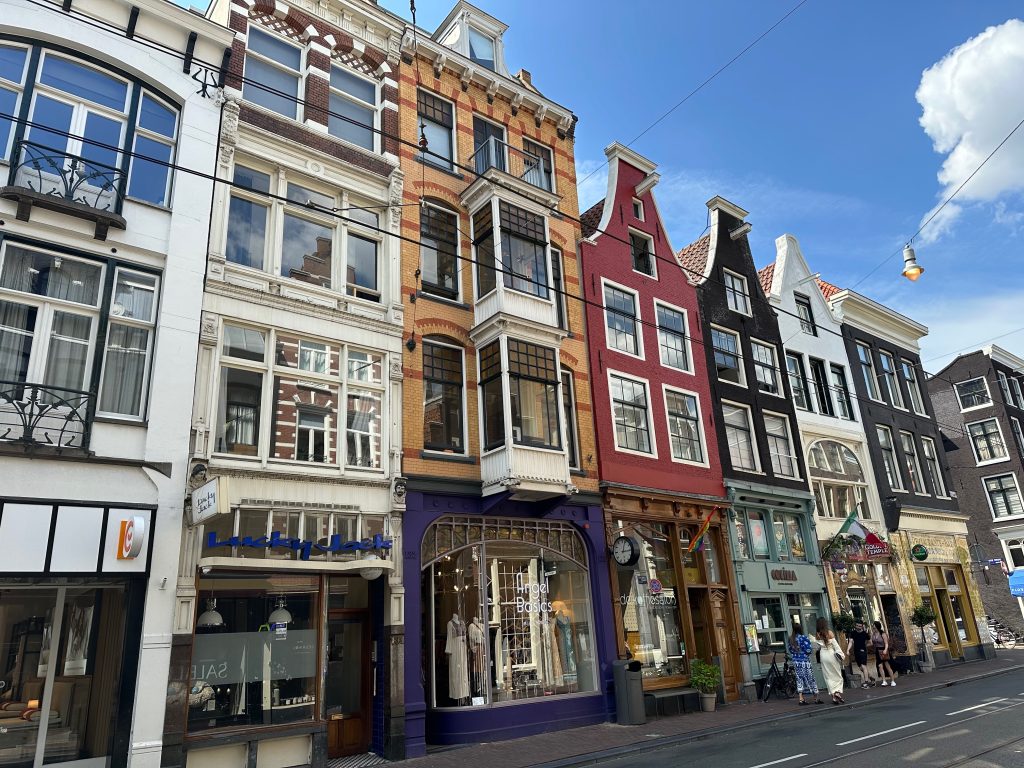
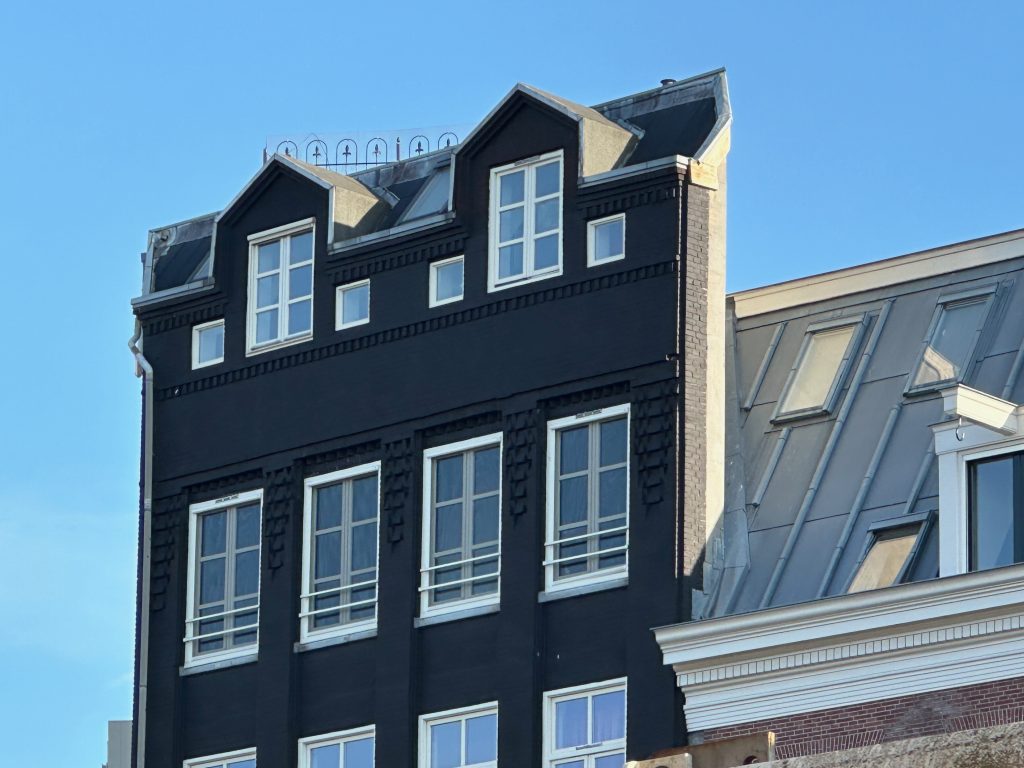
A little aside: Living here with mobility challenges must indeed be challenging, although Mark started collecting pictures of the various mini cars here (only 1m or 3′ wide and tiny) that started out as mobility help and can be taken on bike paths and walkways (the first, a car called CANTRA, was designed for this; newer models just took advantage of the legislative loopholes that the CANTRA opened for cars to be on sidewalks; a recent electric model made by Opel seems to be a favorite, but we also found one that was obviously inspired by the old Isettas from the 1960s that opened at the front and had the back wheels closer together. We did see a good many of them, so I hope some of them really do help people with impaired mobility. Wheelchairs and even walkers or crutches are just impossible here, since almost everything is cobblestone, and many curbs are metal (although there are some curb cuts now). At the very end of the day, we actually saw two people tending to a woman who had obviously stumbled and falled badly on the cobbles–I felt just terrible for her! Our hotel had no elevator and impossibly steep stairs–we kept using the banisters on both sides to maneuver them. End of aside, but fair warning for travelers!
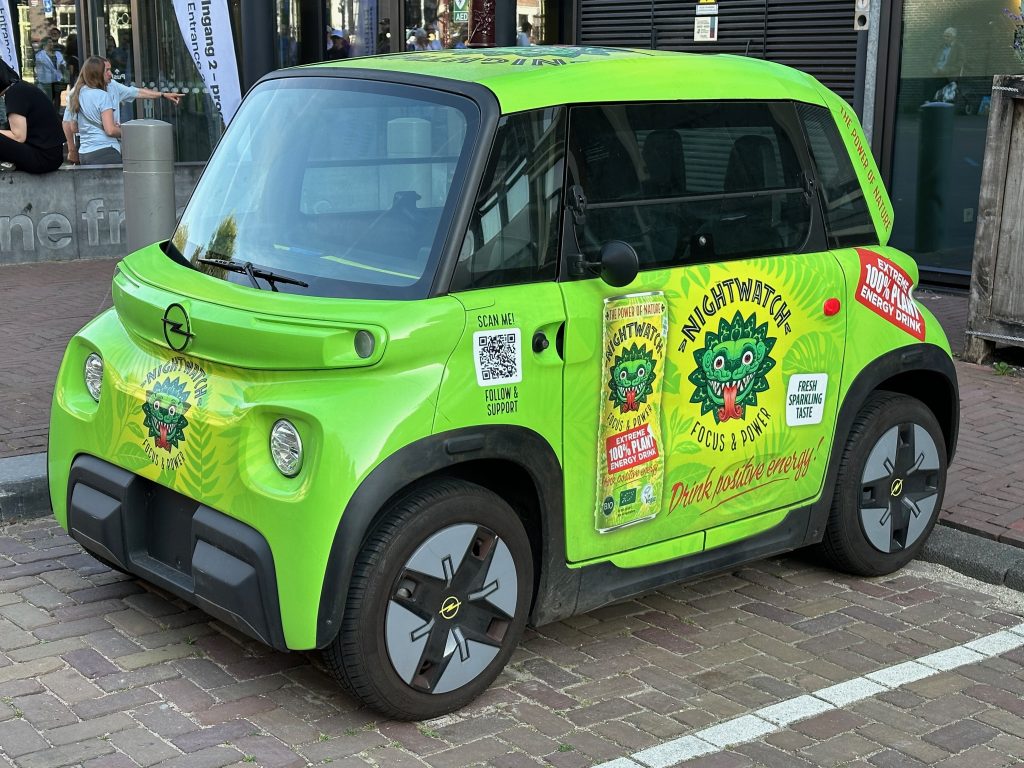
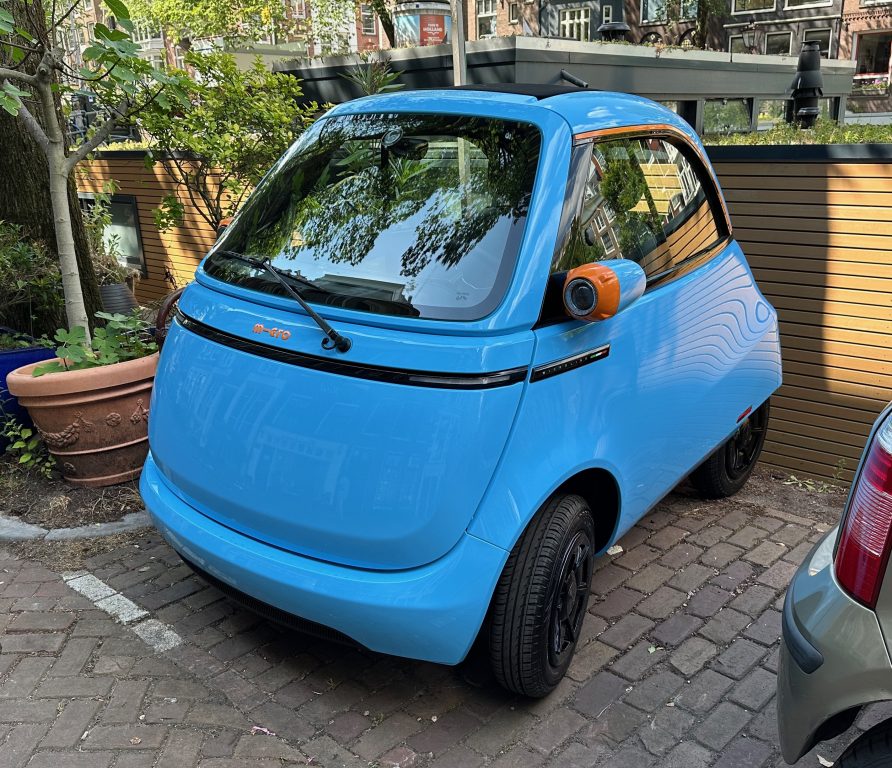
Some of the highlights of our meanderings included: seeing one of the few remaining working bascule bridges (the ones that open to both sides for ships too large to go under them) open, and also a lock (i.e. sluice) in action–this was across the Ij, since we took the free ferry across to North Amsterdam for our one and only “boat ride”–always fun!). We also saw a former swing bridge that has been converted into office space by plopping a building on top and letting both the bridge and the pathway stand, and the old locks on the Amstel that are no longer used but were not torn down. Gazillions of boats maneuver through the open locks–all in all the boat traffic is just mind-boggling; I am not sure how they all manage to maneuver around each other on the canals and on the Amstel without daily crashes!
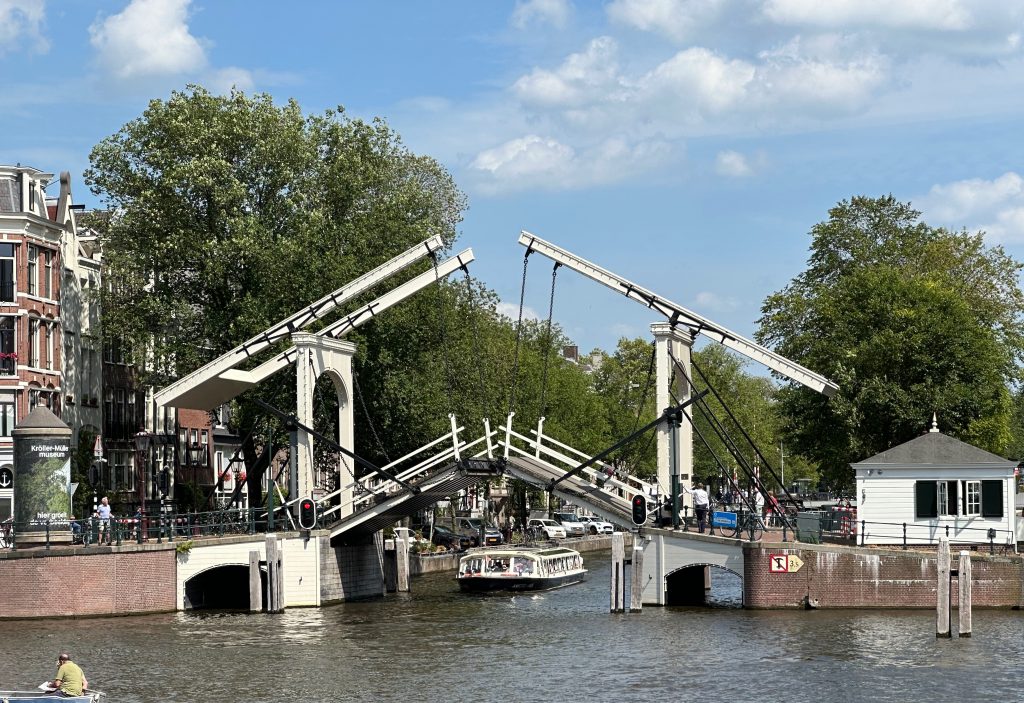
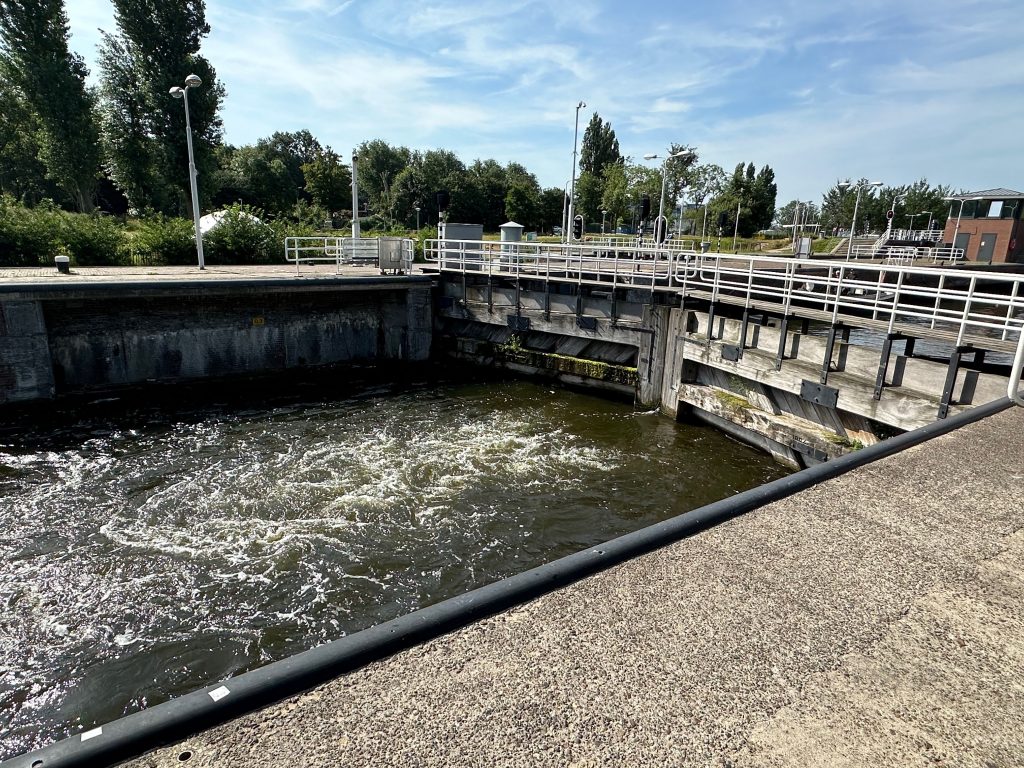
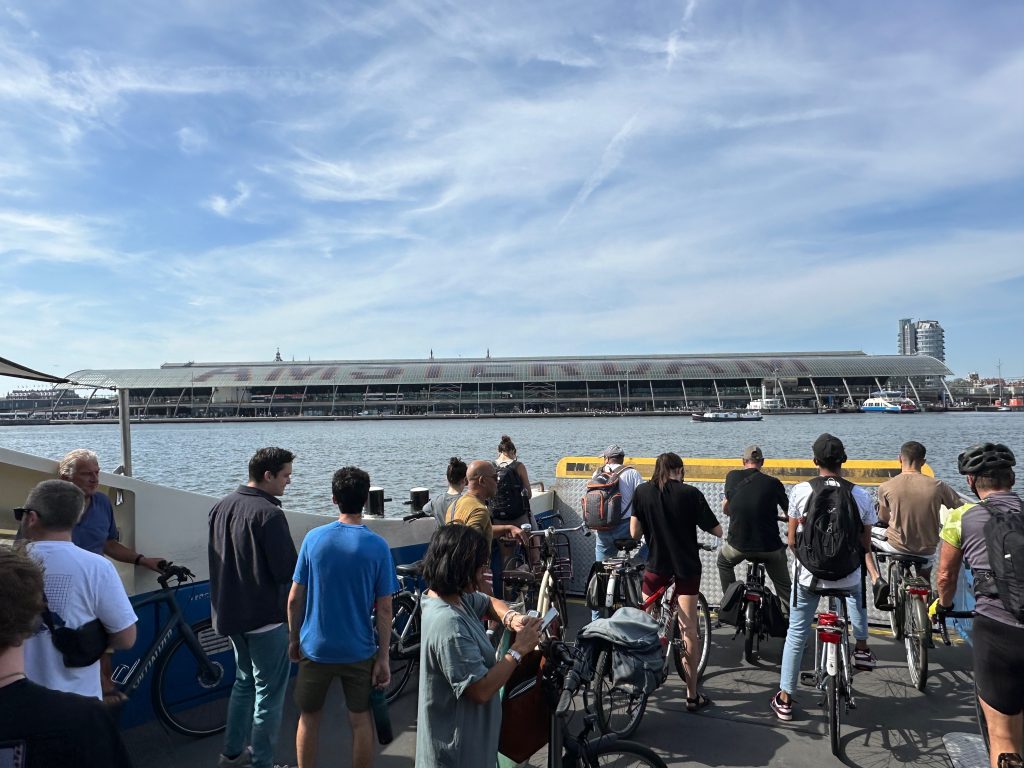
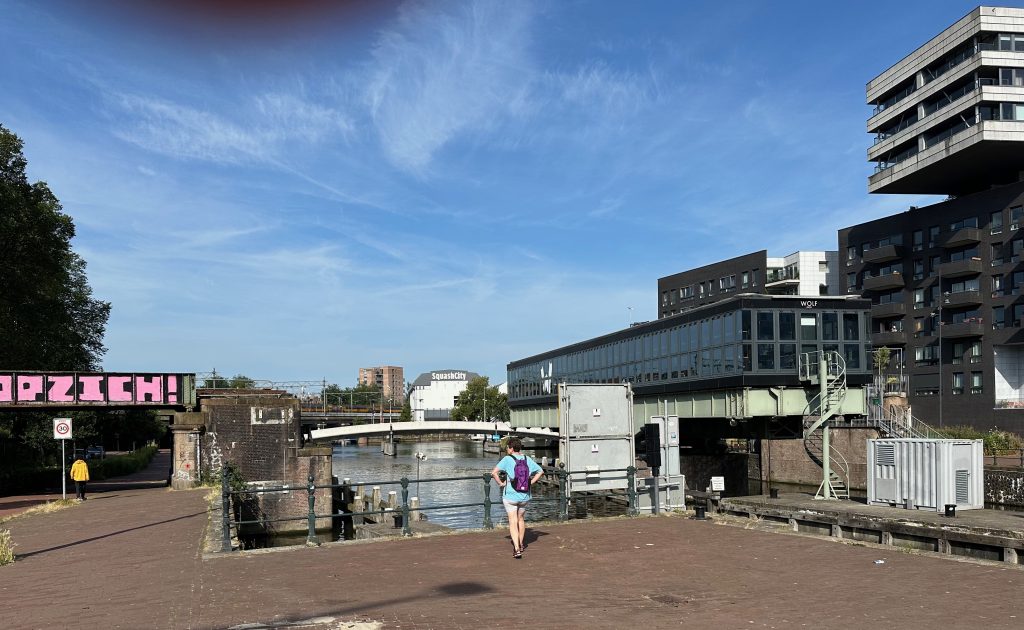
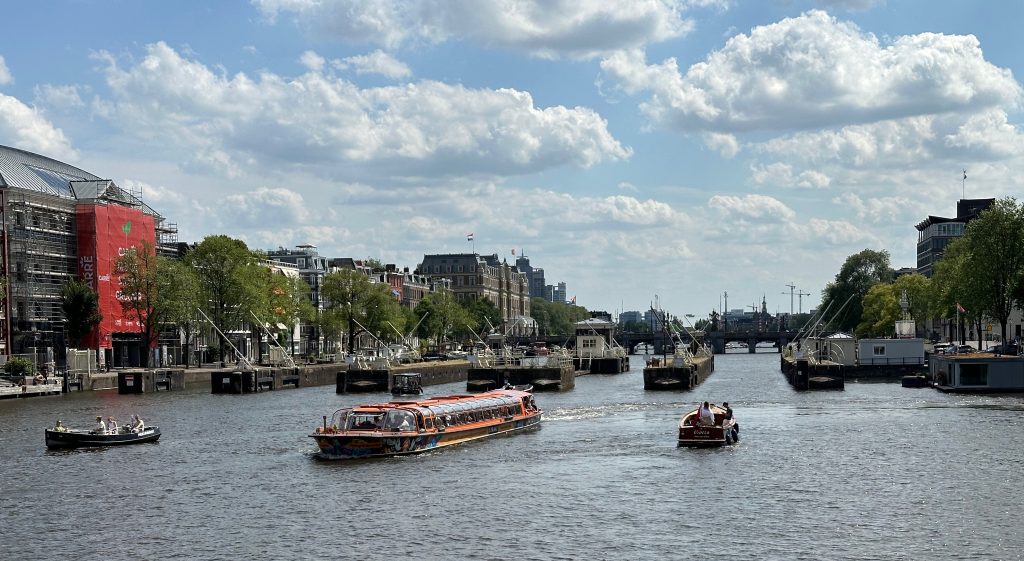
We also managed to walk onto and back off of an “island” surrounded by canals that had more modern residences and a sailboat harbor, so that was a fun change of pace, and we found a couple of new green spaces and other little nooks and crannies as we walked along. In between, we retraced our 2016 steps to the Begijnhof (still a residence for single women and the place where one of the oldest houses of Amsterdam stands) and to the Museumsplein with the big museums. We also tried to re-locate the 3-D-printed bridge near the red-light district that had just been erected in 2021 when we were last here–but it seems to have been removed! A new regular bridge is in its spot now. But at the end of the day, it’s always about the canals (for us, definitely not about the cannabis–my # 3 least favorite smell in Amsterdam, pee and regular cigarettes being # 1 and # 2). And of course about the houseboats, most of which have not moved in many years and have entire gardens of potted plants in some cases. They are probably not as much fun to live in as it looks, but I always like to see them walking by!
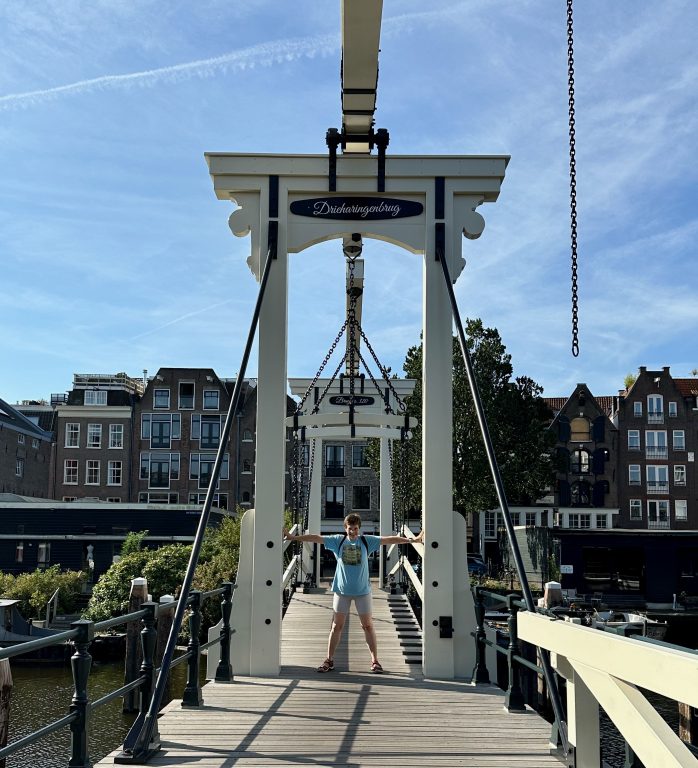
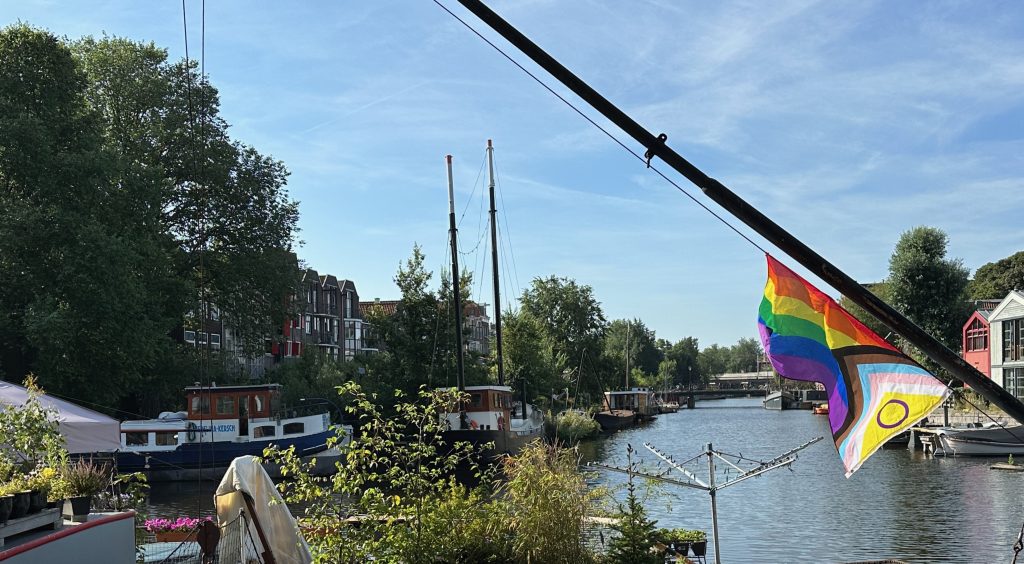
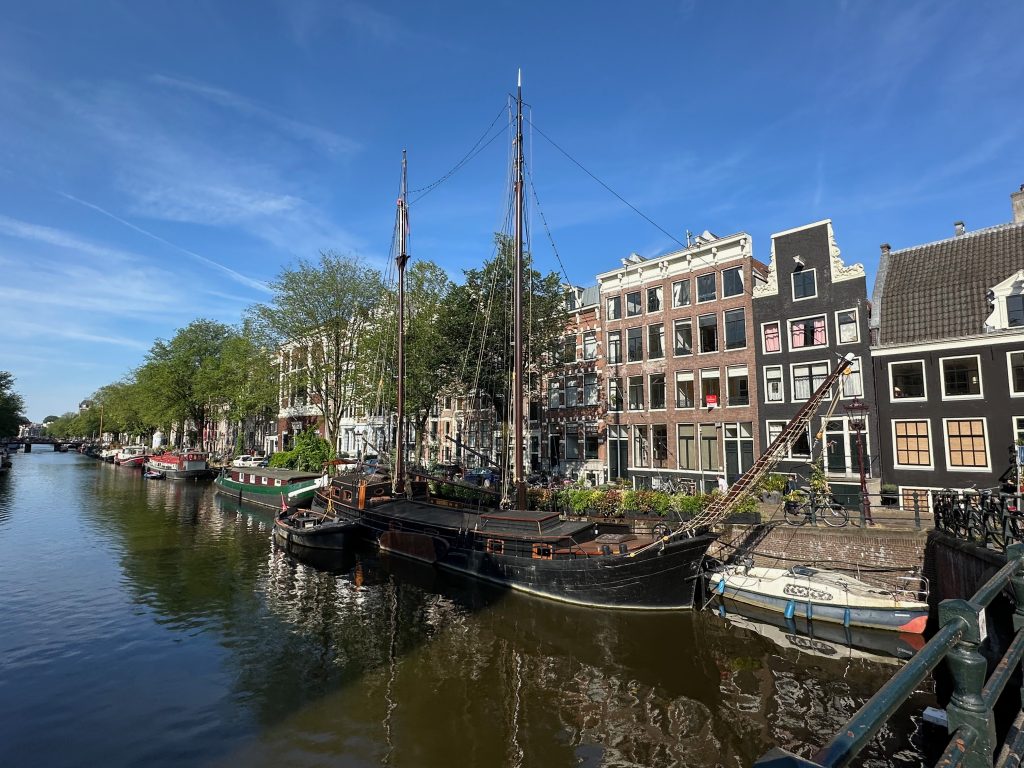
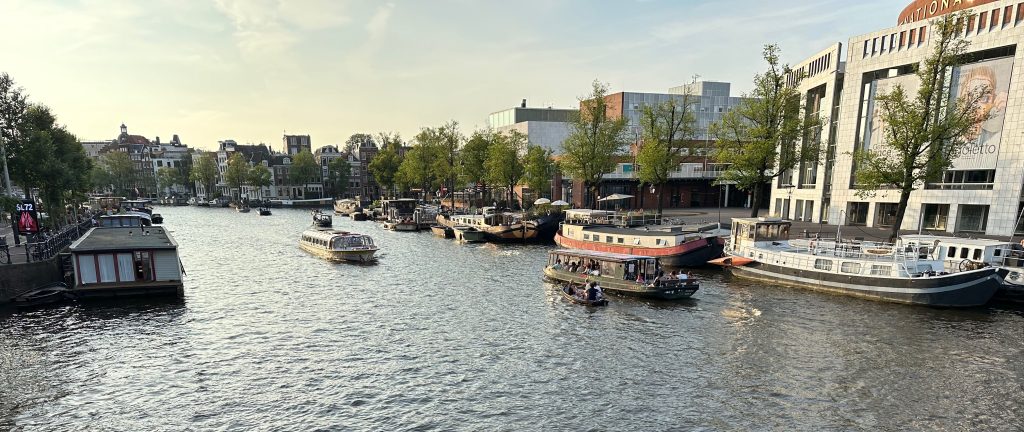
We did not walk our 14+ miles in one stretch, of course–given where our hotel is, we came home twice to rest, take bathroom breaks, refill our water bottles, and even try to nap (predictably, Mark succeeded and I didn’t). And we had two lovely sitdown outdoor meals, one at a traditional Dutch café (omelet and burger), the other at a Vietnamese restaurant, where I had pho and Mark chicken and rice. Everything was freshly prepared; our only disappointment has been the mediocre gelato. We are spoiled by the Italian “Eiscafés” in Germany! We wrapped up the day people watching on the big Dam plaza and then near or hotel on the Rembrandtsplein. We called it a day around 10 pm and were very glad to have maxed out our Amsterdam day!
